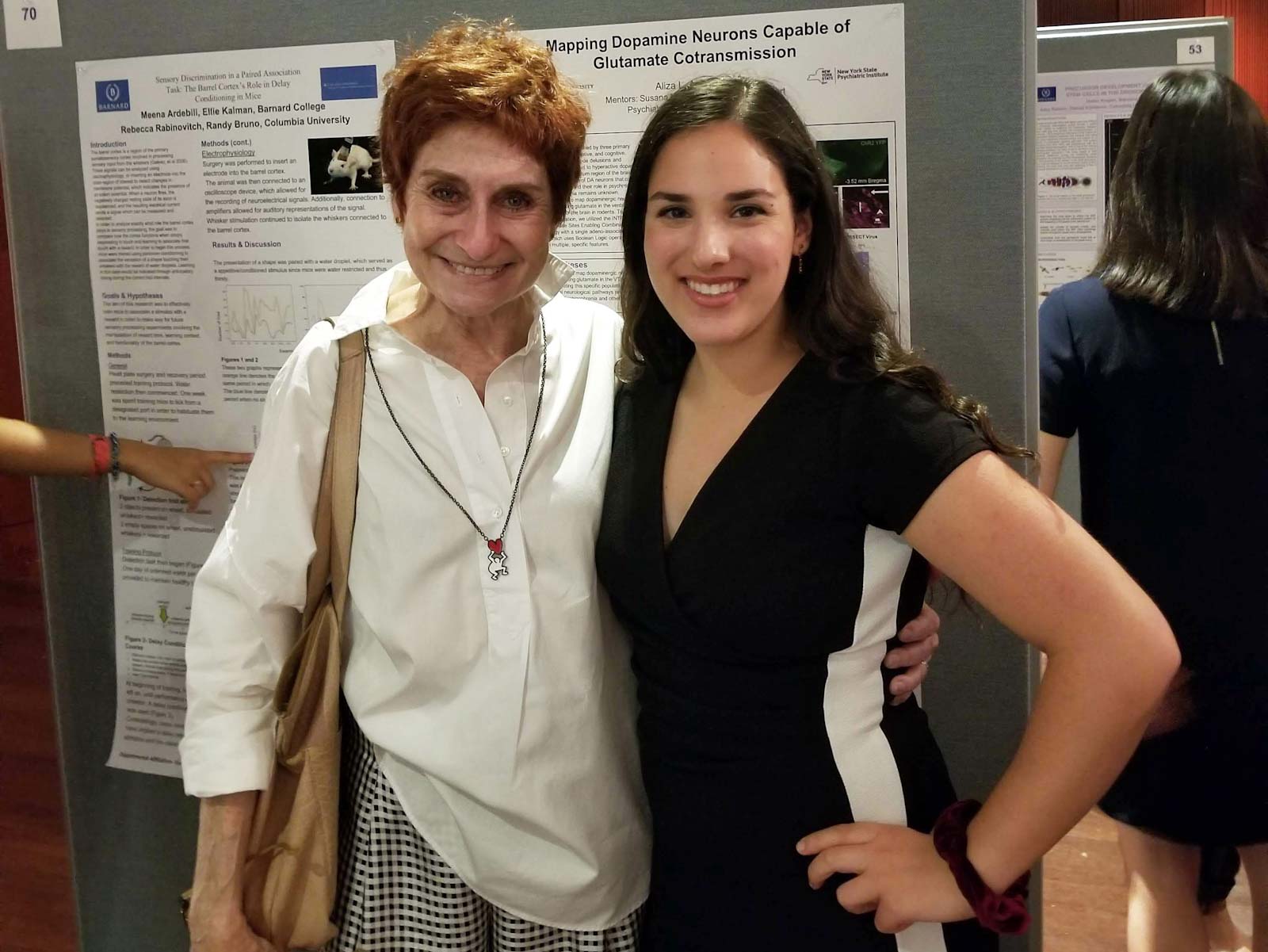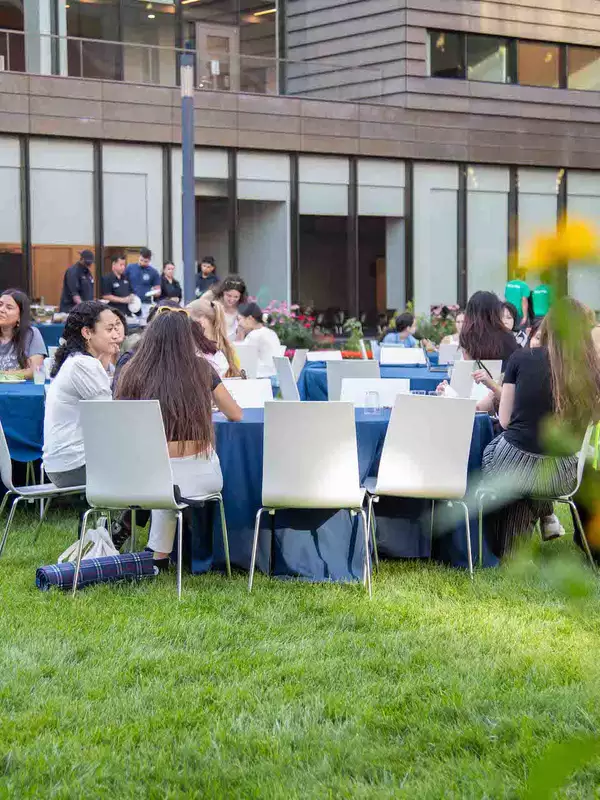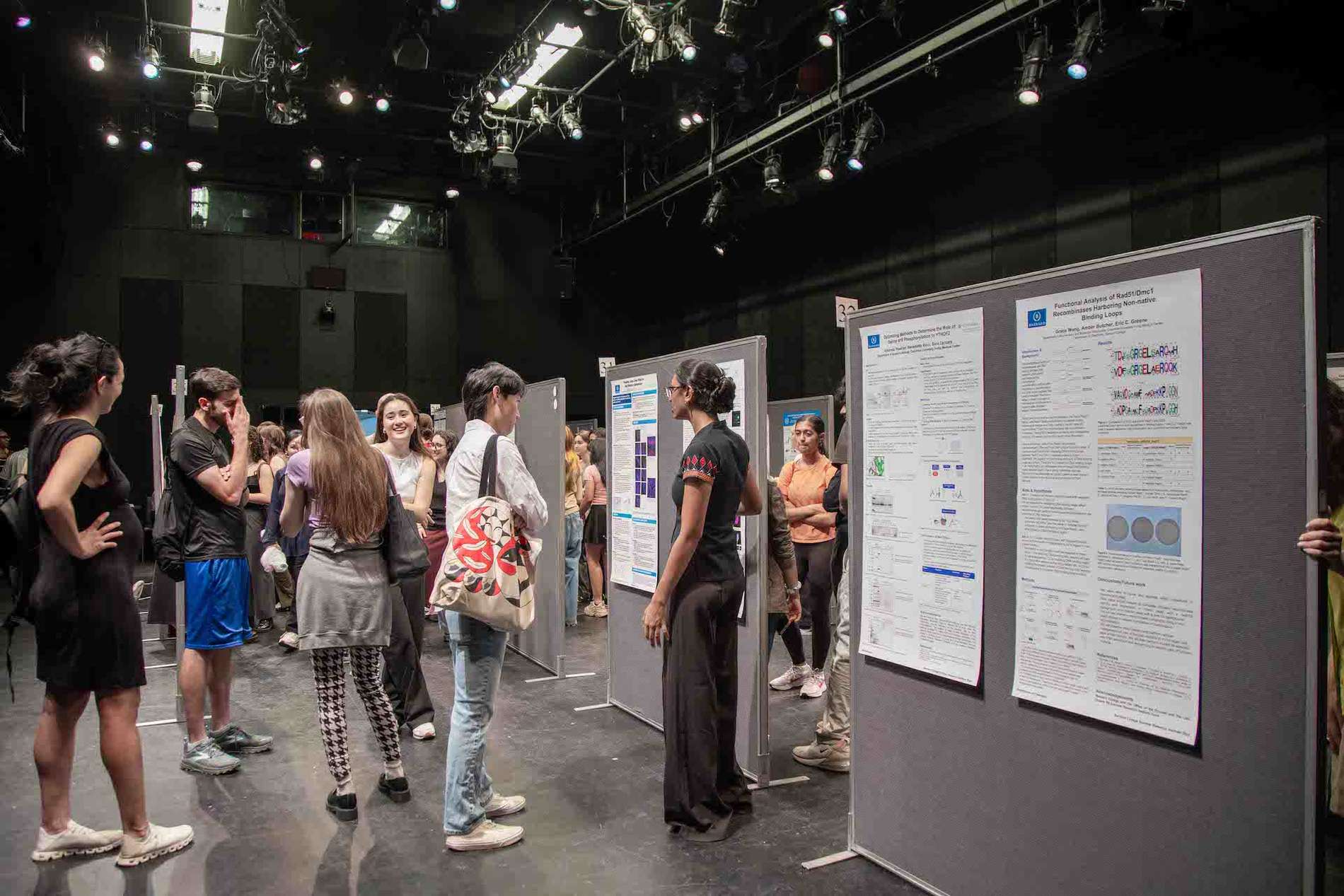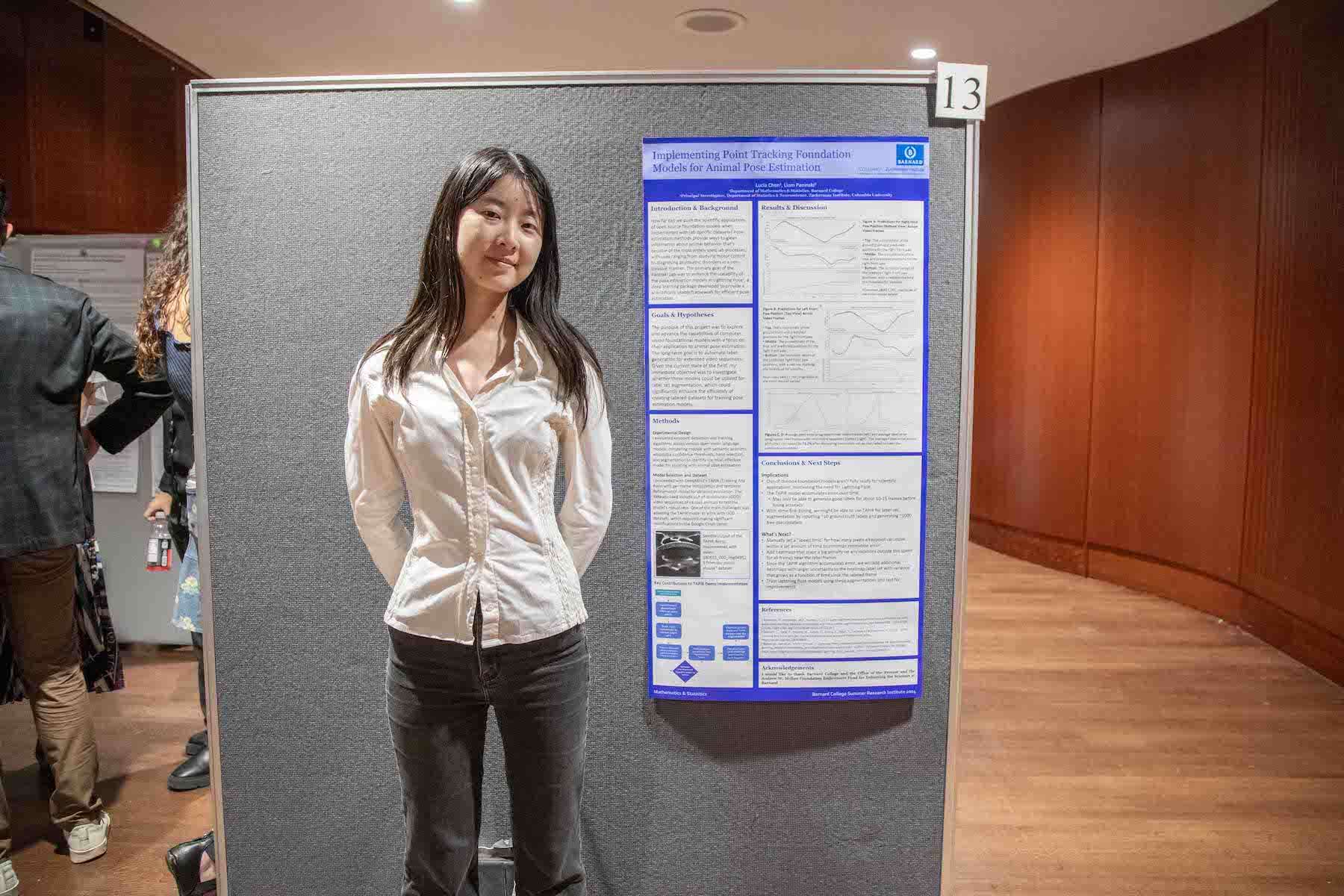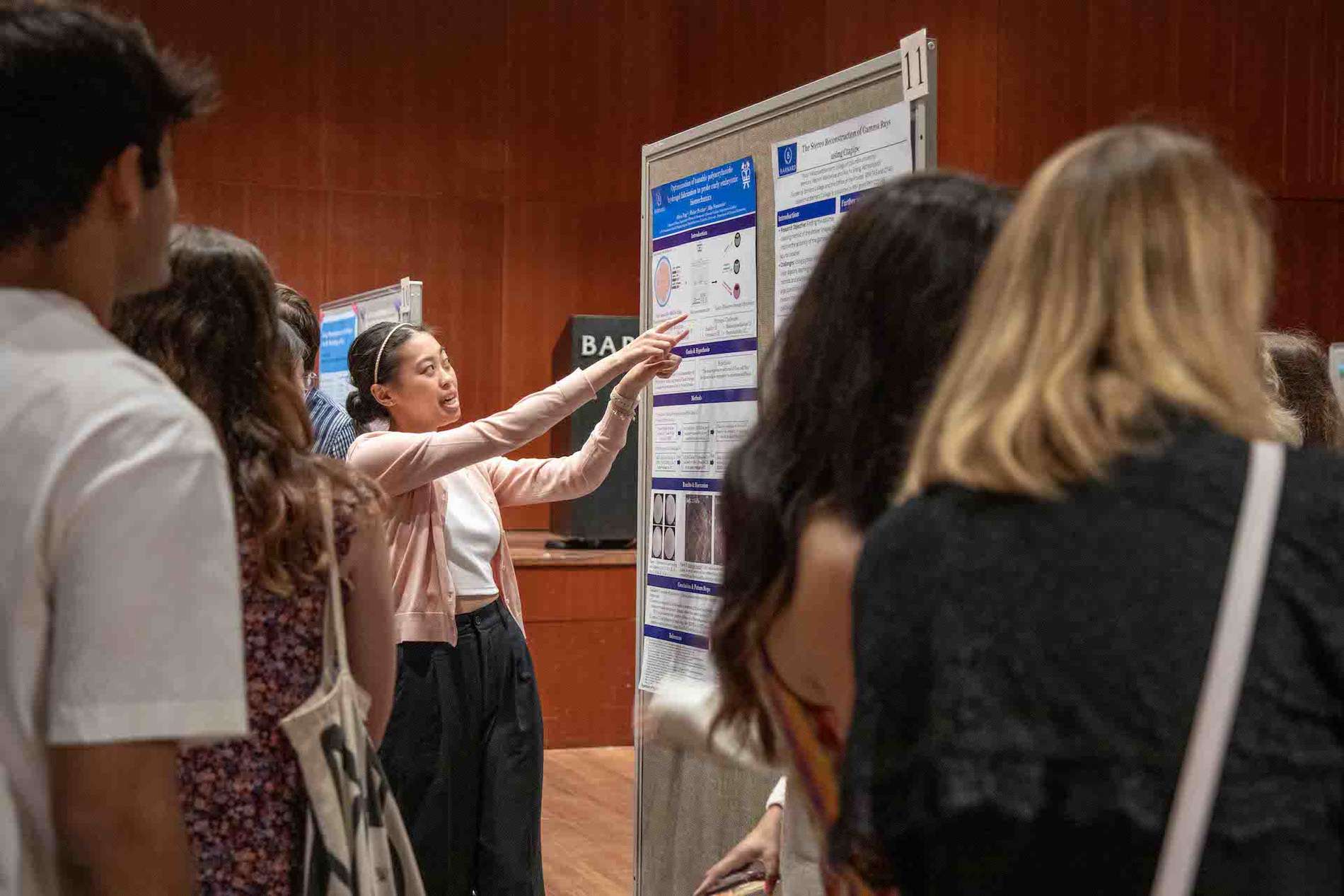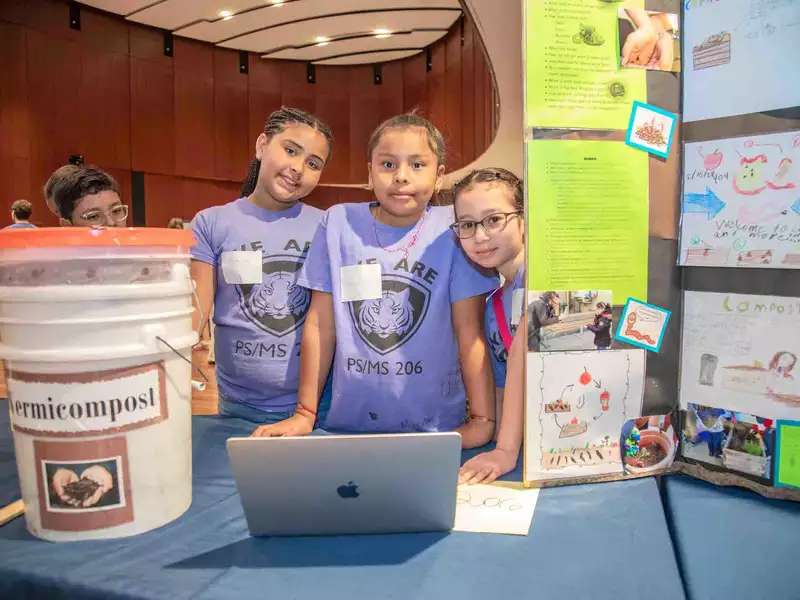
For 10 summers, Barnard’s Summer Research Institute (SRI) has been one of New York City’s most standout programs for science, technology, engineering, and math (STEM), especially for young women scientists.
From the first year of SRI’s debut, the College has offered students 10 weeks to conduct fully funded research projects with Barnard and Columbia faculty mentors in STEM fields. Mentees benefit from Barnard’s commitment to academic excellence and experiential learning by attending panels and workshops designed to hone their scientific, practical, and professional skills.
“We are so excited to have supported students in their scientific exploration for 10 years,” said associate professor of psychology Koleen McCrink, who co-directed the program with associate professor of chemistry Marisa C. Buzzeo ’01. “There is a real sense of accomplishment by the students, faculty, and staff involved in SRI. To be able to mark this milestone feels wonderful.”
This summer, 341 students participated in the May 28-August 2 program — a 240% increase from just over 100 students during its 2014 launch. In addition to receiving a $6,000 summer stipend and access to subsidized on-campus housing, students worked with Beyond Barnard to build résumés and write cover letters. They presented their final research at the Lida Orzeck ’68 Poster Session, one of New York City’s largest gatherings dedicated to young women scientists. Orzeck, the founder and CEO of the lingerie company Hanky Panky, has been a staunch supporter of Barnard students’ academic progress since starting her scholarship fund in 2003.
The alumnae connection continued with Tamar Kushnir ’96, who spoke at this year’s SRI Keynote Conversation and is currently associate chair of psychology and neuroscience at Duke University. She discussed her research on views of morality and understanding of other people throughout childhood, themes that brought together work from cognitive science, psychology, and neuroscience.
“We have seen an explosion of interest in the SRI in recent years,” said McCrink. “It reflects that Barnard students are increasingly drawn to STEM disciplines as part of their liberal arts education here. We are so proud that Barnard is able to support scientific training and discovery for our students and that [former] Provost Bell and President Rosenbury were able to dedicate the needed resources to this critical program.”
Diversifying Disciplines
For years, women — especially those with limited financial resources — have been underrepresented as researchers in the majority of STEM fields. SRI, however, has been a leader in increasing advocacy and awareness of gender disparities in these fields.
“We designed SRI to have low barriers to entry and a generous stipend so that this integral first step of initial scientific training for young scholars would be available to any Barnard science major who sought it out,” said McCrink of the program. “Many of our students who participate in SRI form meaningful relationships with labs in Barnard and other NYC institutions, and these relationships evolve into year-round projects that benefit both the student and mentor.”
In the video above, one such student-mentor pairing flourished at Memorial Sloan Kettering Cancer Center (MSKCC). Chemistry major Kara Philip ’26 spent her summer in the lab of radiation oncologist Quincey LaPlant, M.D., who specializes in breast cancer treatment. Under LaPlant’s guidance, Philip learned how to synthesize nanoparticles, which are used as part of drugs that can target breast cancer tumors.
“Walking into work [at MSKCC] is surreal because there is a building full of people working to fight cancer and make advancements in healthcare. It’s been a great opportunity to get hands-on lab experience outside all of the lab experience that Barnard has provided — and to see what this looks like in a 9-to-5 setting,” said Philip, who is also part of Barnard’s Collegiate Science and Technology Entry Program (CSTEP). “It’s inspiring to see so many people working on micro-projects that, in many ways, align with my own.”
“[Philip] has grown in confidence and in the ability to take steps that are necessary to be a scientist,” said LaPlant. “There are various aspects of this that one has to learn, and Philip is [understanding] how to assess things as a scientist in the laboratory environment. She [can now] assess data, make images, and analyses for [the research center’s] use.”

